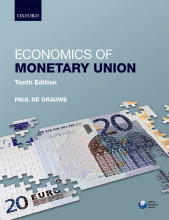The Euro and financial markets
6 important questions on The Euro and financial markets
Shortly describe the integration of money markets in the EMU
Shortly describe the integration of bond markets in EMU
Corporate bond markets did not integrate that much due to the differences in legal systems (e.g. account rules).
Explain how banking sectors integrated in the EMU
But there is (slow) progress in the banking integration. Reason for slowness: the continuing existence of national legislations that regulate banks in the national territories
- Higher grades + faster learning
- Never study anything twice
- 100% sure, 100% understanding
Why is financial market integration important in a MU?
Explain what is meant by risk sharing and a disadvantage of it
Disadvantage: residents of the booming country see their income increase at a lower rate than their output
Name factors leading to the emergence of an international currency and what factors expectedly increase the chances for the Euro to become international
2. policy environment (monetary & financial stability)
3. network externalities (how many others use the same currency)
4. freedom to buy and sell assets
Monetary stability is indicated by inflation rates, since this is the main objective of the ECB, likely to be achieved. It must overcome the sovereign debt crisis however.
The question on the page originate from the summary of the following study material:
- A unique study and practice tool
- Never study anything twice again
- Get the grades you hope for
- 100% sure, 100% understanding






























